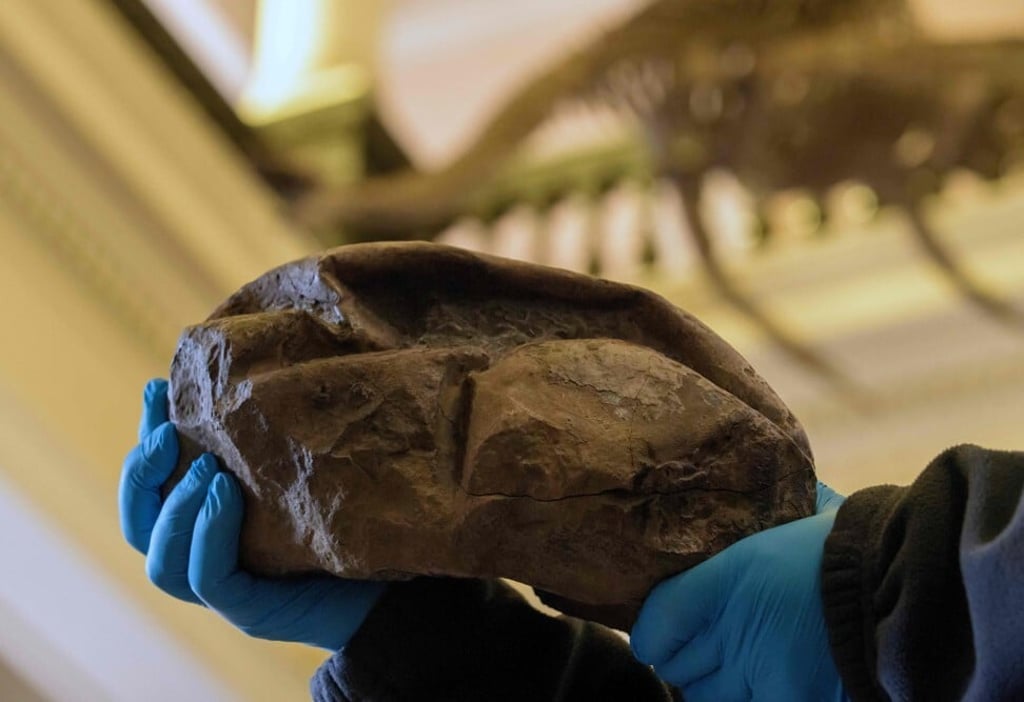Scientists crack mystery of ‘The Thing’: it’s a fossilised egg
- The 68-million-year-old egg, found in Antarctica, is the second-largest ever found
- Researchers say the soft-shelled egg was possibly laid by a type of extinct sea snake or lizard

For years, a mysterious fossil shaped like a deflated American football, discovered in Antarctica, sat in a Chilean museum awaiting someone who could work out just what it was.
Now, analysis has revealed that the mystery fossil – nicknamed by scientists as “The Thing” – is in fact a soft-shelled egg, laid some 68 million years ago, possibly by a type of extinct sea snake or lizard.
The 68-million-year-old fossilised egg – measuring 29cm by 20cm (8 inches by 11 inches) – is the second-largest egg on record. It is slightly smaller than eggs of Madagascar’s giant flightless elephant birds that went extinct only in the past several centuries, researchers said on Wednesday.
While birds, crocodilians and many dinosaurs laid hard-shell eggs, the Antarctic egg had a soft, parchment-like shell.
“This new egg is the very first fossil egg from Antarctica, and the largest soft-shelled egg ever discovered,” said University of Texas palaeontologist Lucas Legendre, lead author of the research published in the journal Nature.
“It looks a bit like a deflated football: elongated, collapsed, with many creases and folds on its surface. One side is flattened, suggesting this is where it came in contact with the sea floor. Its eggshell is very thin and poorly mineralised, like in the eggs of lizard and snakes,” he said.
